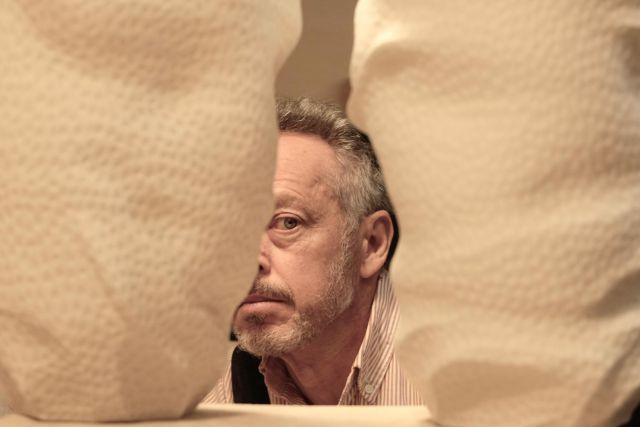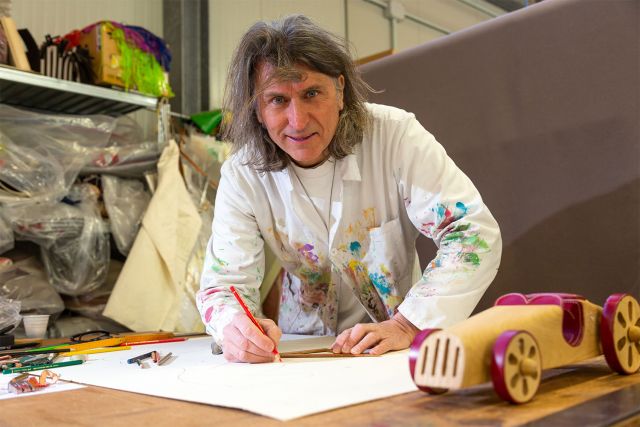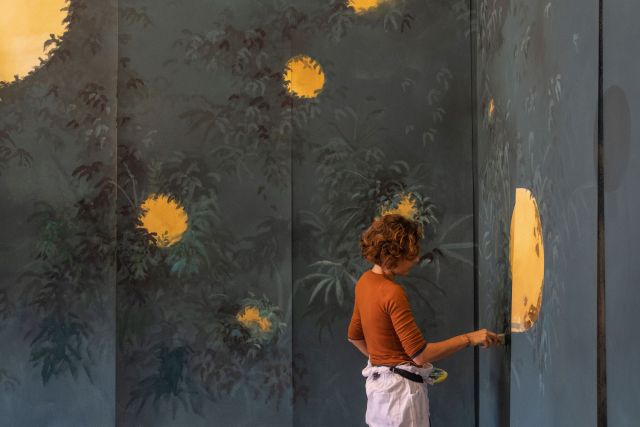Zig Zag vase combines the ancient scagliola technique of the artificial marble of Rima, and modern resin. The vase is an irregular vertical parallelepiped with a curved side. The resin top side is transparent and pure, the customised marble scagliola base has different shades of orange and amber. White veins form a complex and decorative effect. The two parts are joined in a zig zag fashion.
Length 13 cm
Width 13 cm
Height 32 cm
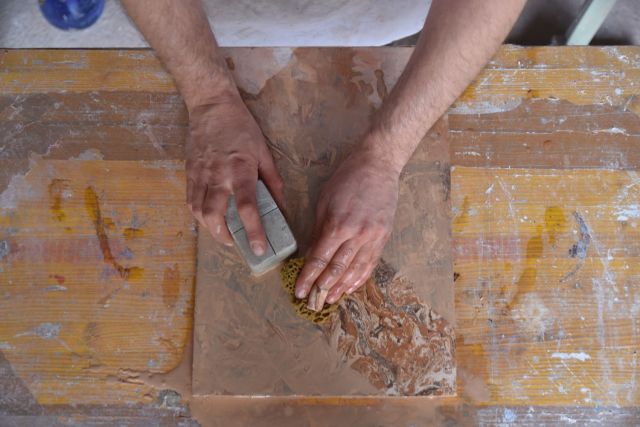
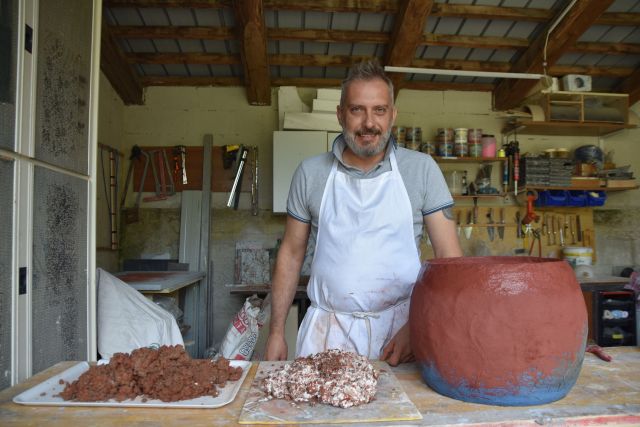
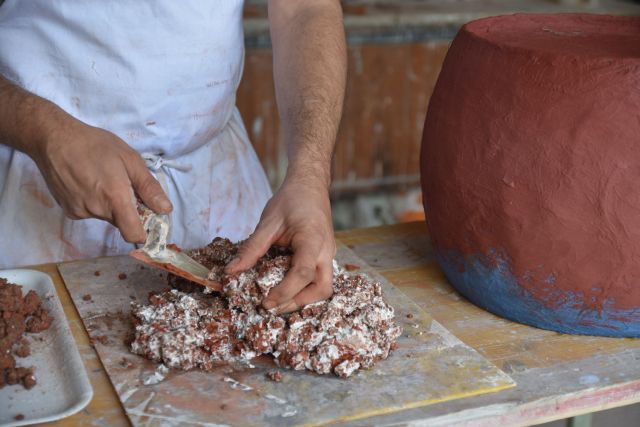
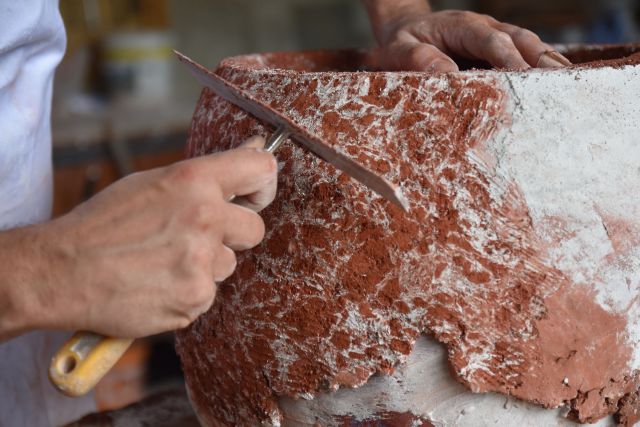
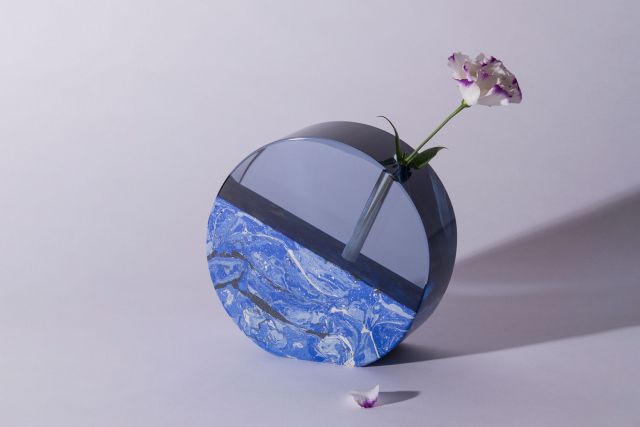
Simone Desirò
- Scagliola maker
- Zubiena, Italy
- Master Artisan
- Recommended by Fondazione Cologni Dei Mestieri D'Arte
By appointment only
+39 3289573936
Ancient veins for modern design
- • Simone comes from a family of decorators
- • Scagliola took him into the world of design
- • He still learns from his grandpa’s drawings
As a young decorator, Simone Desirò decided to devote his energy to the ancient craft of scagliola, following the celebrated tradition of Rima, a Walser village in the Piedmont mountains, close to the Swiss border. Scagliola, also known as imitation marble, is made by mixing selenite, water and rabbit-skin glue with pigments and shows a veined, polished surface. It’s a fine plaster, mainly used in architecture and sculpture – it was very popular in the 19th century. Passionate about his job and looking for contemporary ways to revive it, Simone has found new places to demonstrate this technique, designing objects, home furnishings and collaborating with renowned designers and galleries. “Not only columns – Scagliola has much more to give.”
Read the full interviewWorks
Photo: ©Tamara Baum

Photo: ©Tamara Baum
Rose Gea table combines the ancient scagliola technique of the artificial marble of Rima together with modern resin. This sculptural coffee table is formed as a parallelepiped but with a rounded corner shape. The resin top has a pure old pink colour. The customised marble scagliola base explores shades of fluid pink and purple veins. The two materials meet in a regular wavy edge to create a dreamy effect.
Length 40 cm
Width 60 cm
Height 40 cm

Photo: ©Amir Fazarad
Palmyra is a sculptural bench crafted from scagliola and cast bronze. The idea for this sculpture originates from the remains of the Roman temple of the Syrian complex of Palmyra. The architrave is replaced by a double T beam in cast bronze with a glossy patina that rests on the remains of three columns, made of customised marble scagliola, with big white and yellow veins.
Length 185 cm
Width 30 cm
Height 40 cm

Photo: ©Federico Villa
Volubilis is a conceptual sculptural union between two different architectural archaeological relics: the encounter between a classic capital and a section of industrial double T beam. The capital is made of scagliola, a technique of artificial Rima marble in imitation, and exaltation of the "Breccia centopietre" marble and sinks in a portion into a vertical double T beam made of glossy patinated bronze.
Length 35 cm
Width 25 cm
Height 53 cm

Photo: ©All rights reserved
A rectangular shaped tubular structure, in the background, with 90° curved corners holds a large mirror with a pink iron base. The tubular form in the centre holds a round pink iron table. Both are covered in a scagliola reinterpretation of Iranian pink onyx marble and set on a pink iron base. The semi-oval tubular stool, in the foreground, with round feet and seat base in green iron, is covered with reinterpretation of green Ming marble to complete.
Length 30 cm
Width 110 cm
Height 160 cm





